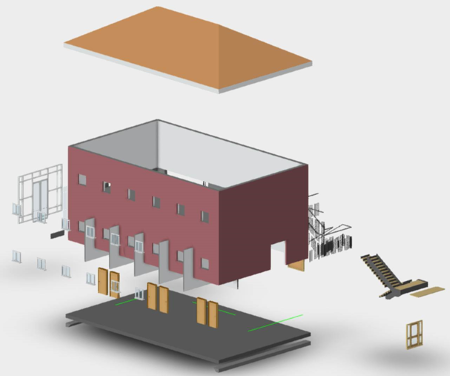Chief Investigators: Adjunct Prof David Ness, Dr Ke Xing, Dr Ki Kim, Mr Adam Jenkins, Dr John Swift
Year Commenced: 2017, Completed end 2020, Further, more intensive research is planned
Problem
Many building products unnecessarily go to waste after their first use, while new products consume resources, energy, and increase GHG emissions. The challenge is to keep potentially demountable building components (such as fit outs, services, façade systems and even structural elements) in closed loops to reuse as viable alternatives to new, so that they deliver more value over their extended life-cycle. Using a cyber-physical information management and exchange platform to identify, examine and exchange reusable components may improve their life-cycle stewardship and circularity.
Project Summary including how the problem was solved
Our research team collaborated with Arup to establish this cyber-physical information exchange system between physical building components (via RFID tags) and their virtual counterparts (BIM).
We developed a prototype Cloud-BIM Information Platform which enabled suppliers to remotely manage, exchange, and gain more value from reusable building components over their extended life-cycle. Designers and contractors may also identify and access reusable components in a variety of locations and, where suitable, incorporate these in new projects.
We can reveal the full potential of the cyber-physical exchange by offering components through a Product-Service System (PSS), coupled with ongoing leasing/rental arrangements. Such novel mechanisms will enable suppliers to guarantee that components meet specified service levels and are able to deliver savings in cost and carbon. For implementation, we have also begun to explore implications and challenges in new forms of business and financing models and to seek support for more intensive research to develop the full capabilities of the prototype Cloud-BIM Platform (see https://youtu.be/IkX_KRCHz1I).
Impact
Our research is among the first in the world to show how a cyber-physical information exchange platform may support the identification, exchange, and reuse of building components, especially when supported by a ‘service’ business model. The project also led to a number of industry reports and research publications that have attracted wide interest from building industries and research communities globally on the further development and deployment of the technology and systems . Applications can be extended to both buildings and infrastructure, and linking with smart sensors can potentially enable online, real-time management and monitoring of the condition and performance of engineering assets.




